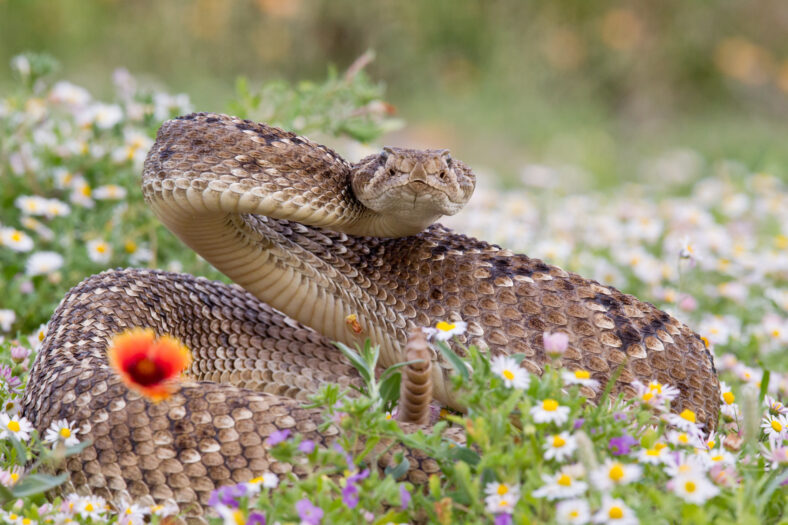Woodrats Have Evolved To Be Resistant To Snake Venom, But When They’re Cold, It Impacts Their Immunity

When it comes to how powerful rattlesnake venom is, weather may have something to do with its strength. A new study analyzed how blood serum samples from wild woodrats responded to rattlesnake venom.
The venom contains hemotoxins that break down blood cells and neurotoxins that cause respiratory paralysis.
Desert woodrats (Neotoma lepida) are herbivorous rodents that inhabit arid regions of the U.S. Southwest. They are known for their immunity to toxins, which occurs naturally in desert environments, including resin from creosote bushes, their primary food source.
Woodrats have also evolved resistance to snake venom, being that they are the natural prey of rattlesnakes. They can survive 500 to 1,000 times the amount that would kill a regular lab mouse. Their immunity comes from proteins circulating in their blood that neutralize the venom.
For the study, the research team used serum samples from woodrats that were collected in 2014 in southwest Utah.
The woodrats were acclimated to warm (85 degrees Fahrenheit) or cool (70 degrees Fahrenheit) captive environments before the blood serum samples were taken.
To their surprise, the researchers found that samples from the warm group were better than samples from the cold group at inhibiting the venom’s toxicity.
“We figured the rattlesnake resistance would be the same whether they were in the cool or the warm, and that when we fed them creosote in either temperature, the rattlesnake resistance would drop,” said Denise Dearing, a senior author of the study and a professor of biology at the University of Utah.
“We weren’t really thinking about the effect of temperature on rattlesnake resistance, so we were pretty surprised by the results that there was such a huge effect that in the cooler environments, the rattlesnake venom resistance was really low. And in the warmer environments, it was really high.”

Sign up for Chip Chick’s newsletter and get stories like this delivered to your inbox.
The Utah serum samples were frozen at the time of collection and thawed years later. Then, they were analyzed at the same room temperature in Michigan. There was still a major difference between rats from the warm and cold groups.
This means the actual content of their blood is changing in response to the temperature of the environment, leading to large differences in the ability to tolerate snake venom.
Furthermore, the team analyzed differences in the serum from woodrats that were fed basic rat chow and those fed with more creosote. The serum from rats that had eaten more creosote was less effective in inhibiting rattlesnake venom.
“In both the temperature and diet tests, there appears to be a physiological trade-off to deal with the various forms of stress to the animal,” Dearing said.
“If the animals are dedicating energy to staying warm or to digesting a toxic diet, they may have less energy available for producing these venom-resistant proteins. And turning on their internal heater to stay warm seems to exert a larger physiological cost in terms of venom resistance.”
Moving forward, the team hopes to determine which of the proteins found in woodrats are reacting to temperature, which may help them learn more about how the animals can tolerate rattlesnake venom so well.
The study was published in Biology Letters.
More About:Animals





